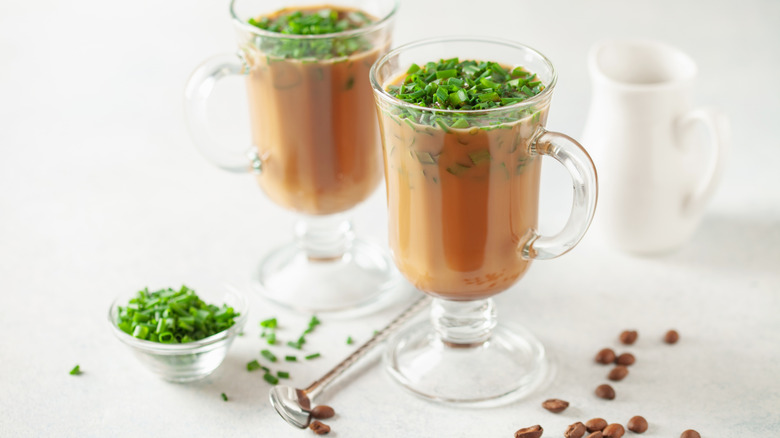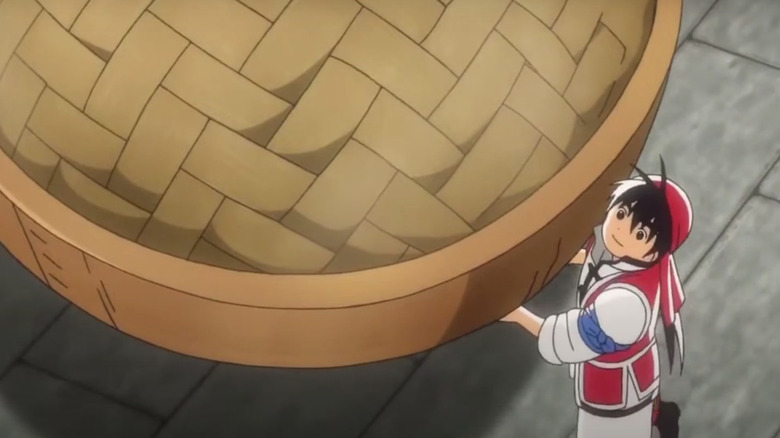What Is Dark Cuisine, Anyway?
Many home gourmands have probably experienced their own version of dark cuisine and not even realized it. Case in point? Pulling leftovers from the fridge to use up before the food becomes inedible — sometimes combining the cast-offs all in the same meal. Nothing's off limits. The only difference between disparate leftover combinations and dark cuisine seems to be the fact that leftovers are thrown together with no other purpose than to eat them in the most expedient, economical way.
Dark cuisine, on the other hand, purposely mixes foods that people with good taste don't normally eat together. While scallion lattes count as the latest iteration of this phenomenon, they only represent one small, eyebrow-raising example of this trend. Other dark cuisine offerings include scoops of vanilla ice cream topped with chili crisp, roast beef drizzled with blueberry yogurt, and spicy sausage mixed with peanut butter and onions. (That last one sounds a bit like the peanut butter onions people started to eat during the Great Depression when budget and ingredient availability put severe constraints on diets.)
While the origins of this trend might have come from Asia, cooks everywhere are taking note and pulling together meals with ingredient lists that are straight out of an episode of "Chopped." Eggs and fresh kiwis become stuffed omelets, and bananas dunked in a healthy helping of sour cream replace plain yogurt mixed with fruit.
Where the idea of dark cuisine came from
In the 1990s, Japanese manga creator, Etsushi Ogawa, wrote a book called "Chuuka Ichiban!" or in English, "China's Number One!" Set in China, the comic followed a 19th-century boy chef who came up against an underground syndicate called the Dark Cooking Society. The word "dark" in this sense, from the phrase "hei an liao li," denotes something that's hidden or hard to swallow. Often, this is specifically a weird food combo, but it can also refer to establishments that brag about having rats on the menu or boast such dirty kitchens that only the bravest dare to eat there. For those who claim they'll try anything once, this food trend is a Food Network film noir dream.
And what's the point of all of this? True enough, there is the shock factor for those who partake in these crazy food combos. Certainly, some of these mash-ups have the makings of a viral Instagram post. For others, it's probably a way to challenge themselves creatively in the kitchen, just as the chefs in "Chopped" are made to do. And for others? This wonky food trend might just be a way to rebel against the workings of polite society without being forced to leave their kitchens.

